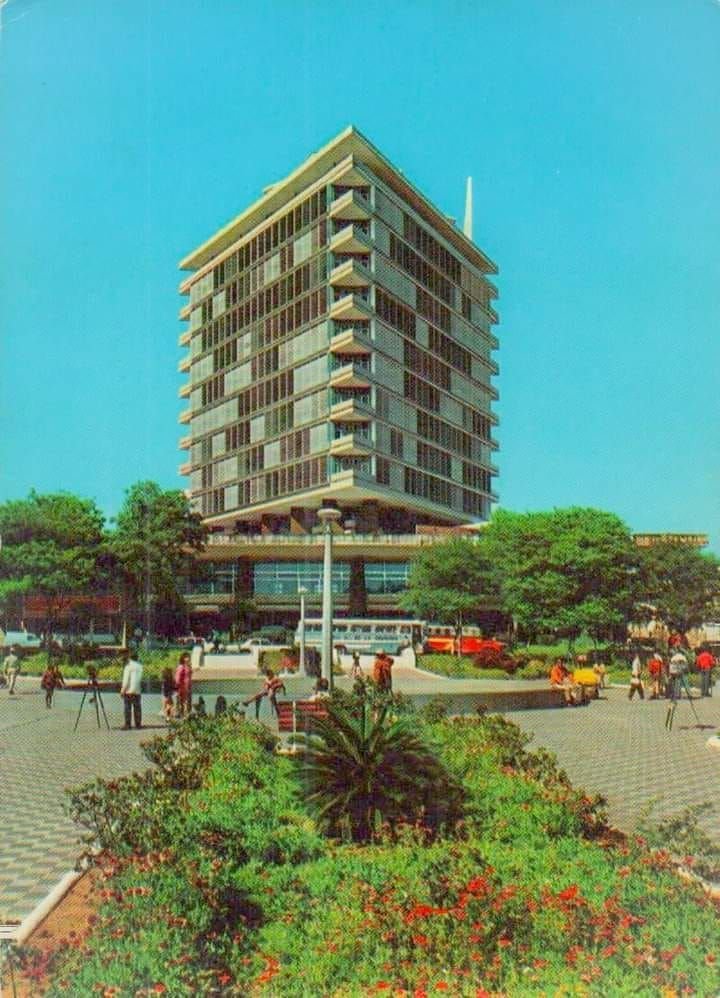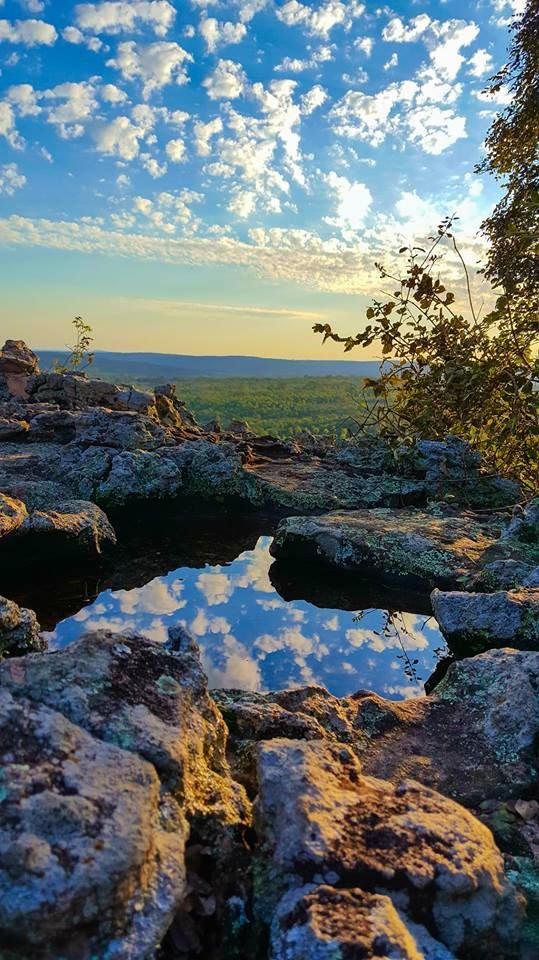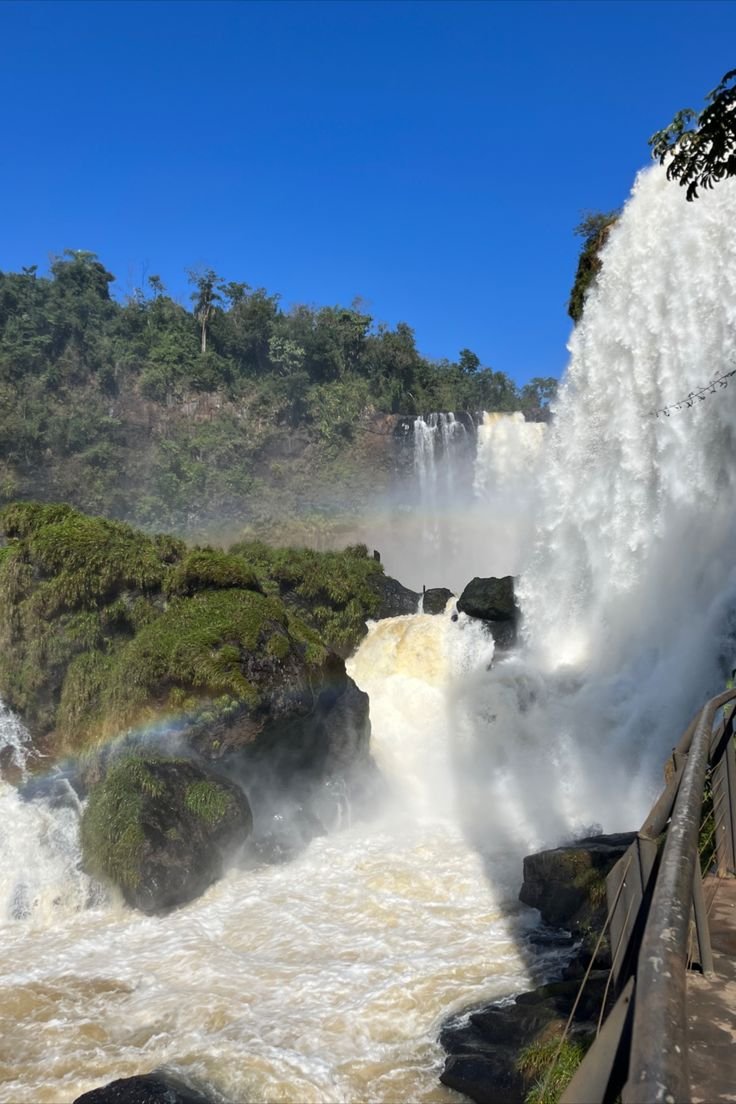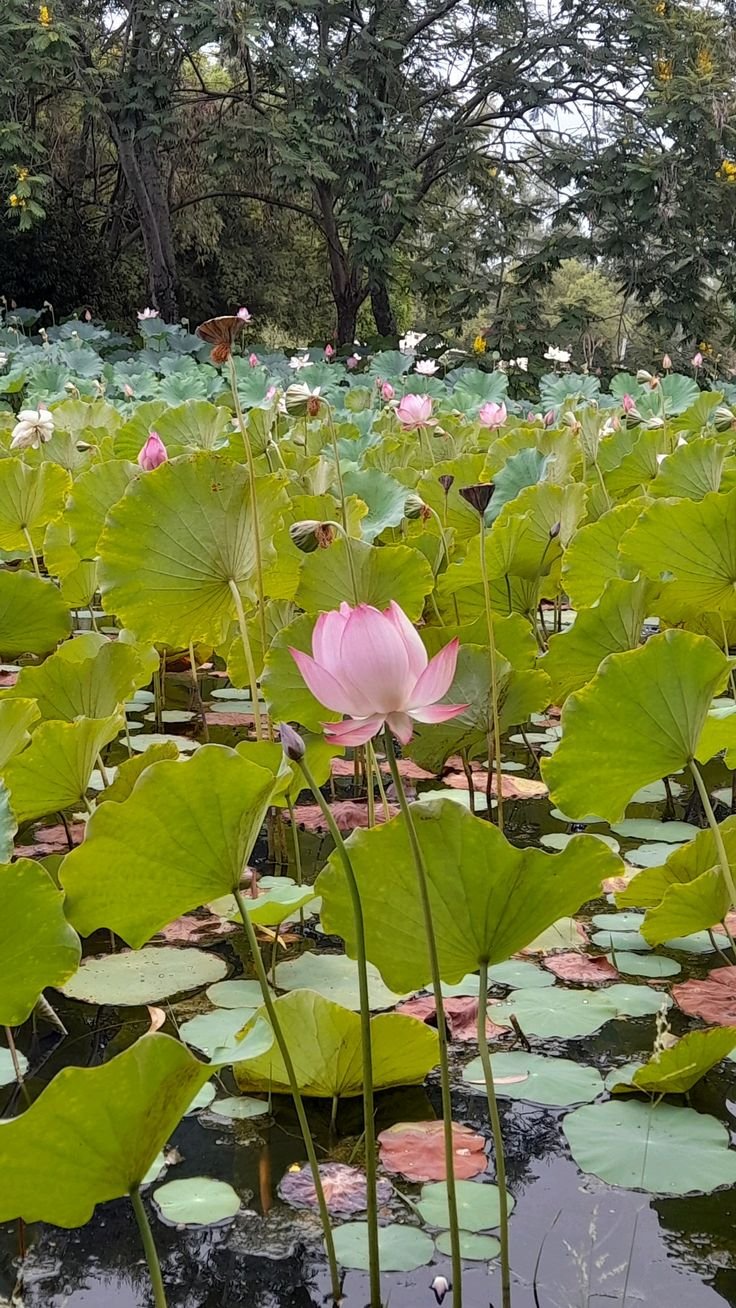Paraguay
Welcome to Paraguay
Welcome to Paraguay, a captivating and often overlooked gem nestled in the heart of South America. Known for its rich cultural heritage, stunning natural landscapes, and warm, welcoming people, Paraguay offers travelers a unique opportunity to explore a country that remains refreshingly authentic and largely untouched by mass tourism. In 2025, Paraguay is gaining recognition as a must-visit destination, promising an enriching experience for those seeking adventure, culture, and tranquility away from the usual tourist crowds.
Paraguay is a landlocked country bordered by Brazil, Argentina, and Bolivia. Despite its modest size, it boasts a remarkable diversity of environments—from the sprawling wetlands of the Pantanal and the wild Chaco forest to charming colonial towns and the vibrant capital city, Asunción. The country’s two official languages, Spanish and Guaraní, reflect its deep indigenous roots and colonial history, creating a rich cultural tapestry that visitors can immerse themselves in. The capital, Asunción, is a lively city blending eclectic architecture, bustling markets, and a growing café and nightlife scene. Beyond the city, Paraguay’s natural beauty shines through in places like the Monday Falls, the Jesuit Missions of La Santísima Trinidad de Paraná and Jesús de Tavarangue, and the golden beaches of Carmen del Paraná. Wildlife enthusiasts can explore the Chaco region, home to jaguars, giant anteaters, and a variety of bird species, making it one of the best birdwatching destinations in the world.
Paraguay’s tourism infrastructure is developing but still retains a charming simplicity, allowing visitors to experience the country’s culture and landscapes without the crowds or commercialization found elsewhere in South America. The country’s emphasis on sustainable and eco-tourism is growing, ensuring that its natural and cultural treasures are preserved for future generations.
Why Visit Paraguay in 2025?
1.
Authentic and Uncrowded Experience
Paraguay remains one of South America’s least visited countries, offering travelers a rare chance to explore places where tourism has not yet overwhelmed local life. This means you can enjoy genuine cultural interactions, peaceful natural settings, and a laid-back atmosphere that is increasingly rare in popular destinations.

2.
Rich Cultural Heritage and Natural Wonders
From the indigenous Guaraní culture, which is alive and celebrated throughout the country, to the impressive Jesuit ruins that tell stories of Paraguay’s colonial past, the cultural experiences here are deep and varied. Nature lovers will find pristine wetlands, dense forests, and unique wildlife waiting to be discovered. The Pantanal, the world’s largest tropical wetland, and the Chaco forest are highlights for eco-tourists and adventurers alike.

Planning Your Trip
Visa Information
Most visitors to Paraguay do not require a visa for short stays. Citizens from many countries, including the United States, Canada, the European Union, and most South American nations, can enter Paraguay visa-free for tourism purposes for up to 90 days. It is advisable to check the latest visa requirements with Paraguayan consulates or official government sources before traveling, as regulations can change.
Best Time to Visit
The ideal time to visit Paraguay is during the dry season, which runs from May to September. This period offers pleasant weather with cooler temperatures, making it perfect for exploring outdoor attractions and wildlife viewing. The shoulder months of April and October can also be good times to visit, with fewer tourists and mild weather. The rainy season, from November to March, brings lush landscapes but can make travel more challenging due to heavy rains and muddy roads.
Getting To and Around
Getting To Paraguay
The main international gateway to Paraguay is Silvio Pettirossi International Airport in Asunción, which offers direct flights from major South American cities such as São Paulo, Buenos Aires, and Lima. Recent improvements in connectivity have made Paraguay more accessible, with increasing flight options and better infrastructure.
For travelers coming from neighboring countries, overland routes are common, especially from Argentina and Brazil. Buses and private transfers connect Asunción with cities like Buenos Aires, Foz do Iguaçu, and Ciudad del Este.
Getting Around
Within Paraguay, transportation options include domestic flights, long-distance buses, and car rentals. The country’s road network is improving but can be basic in rural areas, so planning ahead is essential. In cities like Asunción, taxis and ride-sharing services are readily available. For exploring remote natural areas such as the Chaco or Pantanal, guided tours and 4×4 vehicles are recommended to navigate challenging terrain safely.

Accommodation
Paraguay offers a diverse range of accommodation options catering to different budgets and travel styles, from luxury hotels and boutique stays to budget hostels and charming guesthouses. Whether you are visiting the bustling capital, Asunción, or exploring other cities like Ciudad del Este and Encarnación, you will find a comfortable place to rest that suits your needs.
Luxury and Boutique Hotels
For travelers seeking comfort and upscale amenities, Paraguay has several highly rated luxury and boutique hotels. In Asunción, the Dazzler by Wyndham and Hotel Villa Morra Residence stand out for their modern rooms, excellent service, and convenient locations near shopping and dining areas. These hotels often include breakfast and offer facilities such as swimming pools, fitness centers, and on-site restaurants, making them ideal for leisure and business travelers alike.
Another notable option is La Misión Hotel Boutique, which offers a cozy, intimate atmosphere with clean, comfortable rooms and attentive staff. It’s perfect for those who appreciate personalized service and a quieter environment.
Mid-Range Hotels
For those on a moderate budget, Paraguay has many well-reviewed mid-range hotels that balance comfort and affordability. The Nobile Suites Excelsior Asunción is a popular choice, praised for its friendly staff, good location near shopping districts, and included breakfast. Similarly, the Hotel Guaraní Asunción offers a blend of tradition and modernity with spacious rooms and excellent amenities.
In Ciudad del Este, close to the borders with Brazil and Argentina, hotels like Hotel Convair and Howard Johnson Ciudad del Este provide convenient access to the city’s attractions and transport hubs with comfortable accommodations and good value.
Budget and Hostels
Budget travelers will find affordable options such as hostels and guesthouses that provide basic but clean and welcoming accommodations. Places like Nomada Hostel offer dormitory beds and private rooms at very low prices, often under $15 per night, making them ideal for backpackers and those traveling on a tight budget.
Many budget hotels include free WiFi and breakfast, and some provide helpful local tips and tour arrangements. While facilities may be simpler, the warmth of Paraguayan hospitality is always evident.
Unique Stays and Tips
Unique Stays
For a more immersive experience, consider staying in lodges or eco-friendly accommodations near natural attractions like the Pantanal wetlands or the Chaco region. These lodges often offer guided tours and opportunities to explore Paraguay’s rich biodiversity and wildlife.
Location Tips
- Asunción is the most popular city for accommodation, offering the widest selection of hotels and easy access to cultural and historical sites.
- Ciudad del Este is ideal for travelers interested in shopping and border crossings.
- Encarnación offers charming riverside hotels and is a gateway to the Jesuit Missions and beautiful beaches.
- For a tranquil retreat, smaller towns and eco-lodges provide a peaceful setting surrounded by nature.

Food and Drink
Paraguayan cuisine is a delightful reflection of its cultural heritage, blending indigenous Guaraní ingredients and traditions with Spanish influences. The food is hearty, flavorful, and often centered around corn, beef, and local herbs, offering travelers a true taste of the country’s identity.
Traditional Dishes
- Sopa Paraguaya: Despite its name meaning “Paraguayan soup,” this is actually a dense, savory cornbread made with corn flour, cheese, onions, and sometimes milk or eggs. It’s a staple at meals and a must-try.
- Chipa: A popular snack, chipa is a small, cheesy bread made from manioc (cassava) flour and cheese. It’s often enjoyed with mate tea and sold by street vendors.
- Asado: Paraguayan barbecue is a social event and culinary highlight, featuring various cuts of beef grilled over an open flame. It’s typically served with salads and local sides.
- Mbejú: Another traditional starch-based dish, mbejú is a type of pancake made from manioc starch and cheese, often eaten for breakfast or as a snack.
- Pira caldo: A flavorful fish soup made with river fish, vegetables, and herbs, reflecting Paraguay’s riverine culture.
Popular Beverages
- Tereré: Paraguay’s national drink, tereré is a cold infusion of yerba mate served with ice water and sometimes flavored with herbs like mint or lemongrass. It’s refreshing and deeply ingrained in social life, often shared among friends and family.
- Mate: The hot version of yerba mate, mate is also widely consumed, especially in cooler weather.
- Local beers and spirits: Paraguay produces several local beers and the traditional spirit called caña, a sugarcane liquor often enjoyed in social gatherings.
Dining Out
In cities like Asunción, you’ll find a growing number of restaurants offering both traditional Paraguayan cuisine and international dishes. Many eateries serve generous portions at reasonable prices, with menus featuring grilled meats, fresh salads, and local specialties.
Street food is also an excellent way to experience authentic flavors. Vendors sell chipa, empanadas, and freshly squeezed juices, providing quick and tasty options for travelers on the go.
Food Culture
Meals in Paraguay are often leisurely and communal, reflecting the country’s warm and hospitable culture. Lunch is typically the main meal of the day, sometimes followed by a siesta, while dinner tends to be lighter. Sharing food and drink is a social ritual, and visitors are usually welcomed to join in.
Paraguay is emerging as one of South America’s most intriguing travel destinations in 2025, offering a rich blend of natural beauty, cultural heritage, and authentic experiences. Whether you’re drawn by its wild landscapes, historic sites, or vibrant urban life, Paraguay has plenty to captivate every traveler. Here’s a detailed guide to the must-see attractions and must-do activities for your 2025 visit.

Must-See Attractions
- Asunción – The Charming Capital
Asunción, Paraguay’s capital, is a fascinating mix of colonial architecture, lively markets, and modern urban culture. Stroll along Calle Palma, a street famous for its boutiques, cafés, and street art, or visit the National Pantheon of the Heroes to learn about Paraguay’s history and independence. The Museo del Barro offers a deep dive into indigenous and contemporary Paraguayan art, while the Costanera de Asunción waterfront promenade is perfect for relaxing walks with views over the Paraguay River.
- Jesuit Missions of La Santísima Trinidad de Paraná and Jesús de Tavarangue
These UNESCO World Heritage Sites are among Paraguay’s most important historical treasures. The ruins of the Jesuit missions, built in the 17th and 18th centuries, showcase impressive stonework and offer insight into the unique blend of European and indigenous cultures. The missions are set in peaceful surroundings, ideal for history buffs and photographers.
- Saltos del Monday (Monday Falls)
Located near Ciudad del Este, the Monday Falls are a spectacular natural attraction. These waterfalls plunge dramatically into a lush gorge, surrounded by subtropical forest. The area provides excellent hiking trails and viewpoints, making it a perfect day trip for nature lovers.
- The Chaco Region
The vast, thorny Chaco forest is one of Paraguay’s wildest and most remote areas. It’s a haven for wildlife enthusiasts eager to spot jaguars, giant anteaters, and a myriad of bird species. Visiting the Chaco offers a unique chance to experience an ecosystem unlike any other in South America, with guided safaris and eco-lodges providing immersive nature experiences.
- Pantanal Wetlands
The Pantanal is the world’s largest tropical wetland and part of it extends into Paraguay. Travelers can embark on river cruises aboard floating hotels like the Siete Cabrillas, exploring this biodiversity hotspot rich with birds, caimans, capybaras, and more. This is a must for eco-tourists and photographers.
- Carmen del Paraná Beaches
For a more relaxed pace, the golden sandy beaches of Carmen del Paraná along the Paraná River offer sunbathing, swimming, and peaceful nature escapes. It’s a favorite spot for locals and visitors seeking tranquility away from the cities.
- Basilica of Caacupé
A major pilgrimage site, the Basilica of Caacupé is a stunning religious landmark attracting thousands of visitors annually. The basilica’s impressive architecture and spiritual significance make it a meaningful stop for those interested in cultural and religious heritage.
- Museo del Barro
Located in Asunción, this museum is a treasure trove of Paraguayan art and culture, featuring indigenous crafts, ceramics, and contemporary artworks. It offers a comprehensive look at the country’s artistic evolution and cultural diversity.
- Yaguarón Church
This colonial-era church is renowned for its beautiful baroque architecture and intricate wood carvings. It’s a peaceful and photogenic site that reflects Paraguay’s deep-rooted Catholic traditions.
- National Pantheon of Heroes and House of Independence
Both located in Asunción, these sites are central to Paraguay’s national identity. The Pantheon honors those who fought for independence, while the House of Independence is a museum showcasing the country’s struggle for freedom and early history.

Must-Do Activities
- Experience a Superclásico Football Match
Paraguay’s passion for football is palpable, and attending a Superclásico match between the country’s top clubs, Olimpia and Cerro Porteño, is an unforgettable experience. The stadium atmosphere is electric, with chanting fans, colorful displays, and intense rivalry that captures the spirit of Paraguayan culture.
- Birdwatching and Wildlife Tours in the Chaco
Join guided tours into the Chaco to spot elusive wildlife such as jaguars, giant anteaters, and hundreds of bird species. These tours often include night safaris and visits to eco-lodges, offering a rare glimpse into one of South America’s most biodiverse regions.
- River Cruises on the Paraguay and Paraná Rivers
Take a boat tour from Asunción or Concepción to explore Paraguay’s extensive river systems. Cruises aboard floating hotels like the Siete Cabrillas offer a unique way to see the Pantanal wetlands, enjoy the natural scenery, and experience local river life.
- Hiking and Exploring Waterfalls
Trek the trails around Saltos del Monday or explore the paths in Ybycuí National Park to enjoy Paraguay’s lush forests and waterfalls. These hikes range from easy walks to more challenging routes, suitable for all levels of outdoor enthusiasts.
- Visit Local Markets and Try Traditional Food
Exploring markets in Asunción and other towns offers a vibrant glimpse into Paraguayan daily life. Sample traditional foods like chipa (cheese bread), sopa paraguaya (cornbread), and fresh tropical fruits. Don’t miss trying tereré, the cold yerba mate infusion that is the country’s national drink and a social ritual.
- Explore Colonial Towns and Villages
Visit picturesque towns such as Trinidad and Encarnación to admire colonial architecture, local crafts, and friendly communities. Encarnación also hosts lively festivals and boasts beautiful riverfront beaches.
- Cultural Festivals and Indigenous Experiences
Participate in local festivals celebrating Guaraní culture, music, and dance. These events provide authentic experiences and opportunities to learn about Paraguay’s indigenous heritage.
- Relax on the Beaches of Carmen del Paraná
Spend a day or two soaking up the sun on the golden beaches, swimming in the Paraná River, and enjoying the peaceful natural surroundings.
- Explore the Itaipu Dam
One of the world’s largest hydroelectric dams, the Itaipu Dam near Ciudad del Este offers guided tours showcasing impressive engineering feats and the surrounding nature reserve.
- Visit Museums and Art Galleries in Asunción
Delve into Paraguayan culture at museums like the Museo del Barro or the Casa de la Independencia, which provide rich insights into the country’s history, art, and identity.
Explore Belgrade’s Vibrant Urban Life
Start your Serbian adventure by wandering through Belgrade’s bustling streets. Stroll along Knez Mihailova, a lively pedestrian zone lined with shops, cafés, and street performers. Visit Republic Square and the National Museum, then unwind in the bohemian quarter of Skadarlija. At night, experience Belgrade’s legendary nightlife with its numerous bars, clubs, and floating river clubs called splavs.
Attend the EXIT Festival
If visiting in July, don’t miss the EXIT Festival at Petrovaradin Fortress in Novi Sad. This world-renowned music festival features international and local artists across genres, set against the dramatic backdrop of the Danube and historic fortress walls. It’s a vibrant celebration of music, culture, and youth.
Hike and Bike in National Parks
Serbia’s national parks like Tara, Đerdap, and Fruška Gora offer excellent hiking and biking trails through pristine forests, alongside rivers and lakes. Tara National Park is known for its dense woods and wildlife, including rare brown bears. Fruška Gora, often called the “jewel of Serbia,” is dotted with monasteries and vineyards, perfect for active exploration and cultural discovery.
Ride the Šargan Eight Narrow-Gauge Railway
This scenic heritage railway winds through the mountains of western Serbia, offering breathtaking views of valleys, rivers, and forests. The train’s figure-eight track is a marvel of engineering and a nostalgic journey back in time. It’s a favorite for families and history enthusiasts alike.
Visit Orthodox Monasteries
Serbia’s monasteries are treasure troves of medieval art and spirituality. Besides Studenica, explore Sopocani Monastery with its delicate frescoes, and Manasija Monastery, known for its impressive fortifications and rich history. These sites offer insight into Serbia’s religious traditions and architectural heritage.
Taste Rakija and Serbian Cuisine
Sampling rakija, the national fruit brandy, is a must. Many local distilleries offer tastings paired with traditional dishes like ćevapi, sarma, and freshly baked burek. Food markets and kafanas provide authentic culinary experiences, often accompanied by live folk music.
Relax at Ada Ciganlija
Known as “Belgrade’s Sea,” Ada Ciganlija is a river island turned recreational area with clean beaches, sports facilities, and cafés. It’s perfect for swimming, kayaking, cycling, or simply soaking up the sun in a lively, green setting just minutes from downtown Belgrade.
Explore Historical Towns and Fortresses
Beyond the capital, visit towns like Niš with its Roman ruins and fortress, or Smederevo with its massive medieval fortress on the Danube. These sites offer rich historical narratives and impressive architecture.
Discover Unique Geological Sites
Devil’s Town and Resava Cave are among Serbia’s most intriguing natural wonders. Explore these unusual landscapes with guided tours that share local folklore and geological insights.
Serbia in 2025 is a destination where history meets nature and vibrant city life blends with serene landscapes. From the ancient walls of Belgrade Fortress to the wild beauty of Đerdap Gorge, and from lively festivals to quiet monastery visits, the country invites you to explore its many facets and create lasting memories. Whether you seek cultural immersion, outdoor adventure, or simply a warm welcome, Serbia delivers an enriching travel experience.

Travel Tips
Visiting Paraguay in 2025 promises a rewarding experience filled with vibrant culture, stunning landscapes, and warm hospitality. To make the most of your trip, it’s essential to be well-prepared with practical travel tips focused on safety, understanding local customs, and basic language skills. Here’s a comprehensive guide to help you navigate Paraguay confidently and respectfully.
Safety Advice
Paraguay is generally considered a safe country for travelers, but like many destinations, it requires vigilance and common sense to avoid potential risks.
- Stay Alert in Crowded Areas: Petty crimes such as pickpocketing and bag snatching are the most common threats, especially in busy markets, bus stations, and tourist hotspots. Always keep your belongings secure and avoid displaying valuables like expensive jewelry, cameras, or large amounts of cash.
- Avoid Walking Alone at Night: Stick to well-lit, busy streets after dark, particularly in cities like Asunción and Ciudad del Este. Avoid isolated or poorly lit areas to reduce the risk of encountering unsafe situations.
- Use Reputable Transportation: Opt for official taxis or ride-sharing apps rather than hailing cabs off the street. When using public transport, remain aware of your surroundings and keep your belongings close.
- Be Cautious at ATMs: Use ATMs located inside banks or busy shopping centers during daylight hours. Cover your PIN when entering it and watch for any suspicious devices that might be attached to the machine.
- Avoid Flashing Wealth: Refrain from showing large sums of money or expensive gadgets in public, as this can attract unwanted attention.
- Stay Informed About Local Conditions: Before traveling to remote or rural areas, research safety conditions and consider hiring a local guide. Some regions, especially in the Chaco or border areas, may have different security dynamics.
- Health Precautions: Paraguay has mosquito-borne diseases such as dengue and Zika. Use insect repellent, wear long sleeves and pants during dawn and dusk, and sleep under mosquito nets if possible. Drink bottled or boiled water and be cautious with street food to avoid stomach issues.
- Driving Safety: If renting a car, ensure you have an international driving permit and familiarize yourself with local driving customs. Roads can vary in quality, and night driving is generally discouraged due to poor lighting and unexpected obstacles like animals or pedestrians.
- Trust Your Instincts: If a situation feels unsafe or uncomfortable, remove yourself quickly and seek help if necessary.
Local Customs
Understanding and respecting Paraguayan customs will enrich your experience and help you connect with locals.
- Warm Hospitality: Paraguayans are known for their friendliness and hospitality. It is common to be greeted warmly, and locals often appreciate when visitors show interest in their culture.
- Greetings: A handshake is the standard greeting, often accompanied by direct eye contact and a smile. Among friends and family, a light kiss on the right cheek is customary.
- Dress Modestly: Paraguay is a relatively conservative country. Dress modestly, especially when visiting religious sites or rural areas. Avoid overly revealing clothing to show respect for local sensibilities.
- Social Etiquette: Public displays of affection are generally kept discreet. When invited to a local home, it’s polite to bring a small gift such as sweets or flowers.
- Language and Communication: While Spanish is the official language, Guaraní is also widely spoken and holds co-official status. Many Paraguayans are bilingual, and using a few words in Guaraní can be seen as a sign of respect.
- Tipping: Tipping is not mandatory but appreciated. In restaurants, leaving around 10% is customary if service is not included in the bill.
- Respect Religious Practices: Paraguay is predominantly Catholic, and religious festivals and traditions are important. When visiting churches or attending events, behave respectfully and dress appropriately.
Language Basics
Spanish and Guaraní are the two official languages of Paraguay. While Spanish is widely spoken and understood, Guaraní remains a vital part of national identity and everyday communication, especially outside major cities.
Learning a few basic phrases in Spanish and Guaraní will greatly enhance your interactions and show respect for the local culture.
Common Spanish Phrases:
- Hello: Hola
- Good morning: Buenos días
- Please: Por favor
- Thank you: Gracias
- Yes / No: Sí / No
- Excuse me / Sorry: Perdón / Lo siento
- How much does it cost?: ¿Cuánto cuesta?
- Where is…?: ¿Dónde está…?
- I don’t understand: No entiendo
- Do you speak English?: ¿Habla inglés?
Common Guaraní Phrases:
- Hello: Mba’éichapa
- Thank you: Aguyje
- Yes / No: Heẽ / Nahániri
- Please: Nderehechaukaiva’erã
- Goodbye: Jajotopata
Even a small effort to use local language phrases is warmly received and can open doors to more meaningful experiences.
Final Tips for a Smooth Journey
Traveling in Paraguay in 2025 can be a safe and deeply rewarding adventure with the right preparation. Stay alert to your surroundings, especially in crowded or unfamiliar places, and use trusted transportation. Respect local customs by dressing modestly, greeting people politely, and understanding the importance of both Spanish and Guaraní languages. Health precautions against mosquito-borne illnesses and food safety are vital to ensure a comfortable trip.
By embracing Paraguay’s culture with respect and awareness, you’ll enjoy a warm welcome and authentic experiences in this beautiful and culturally rich South American country.

